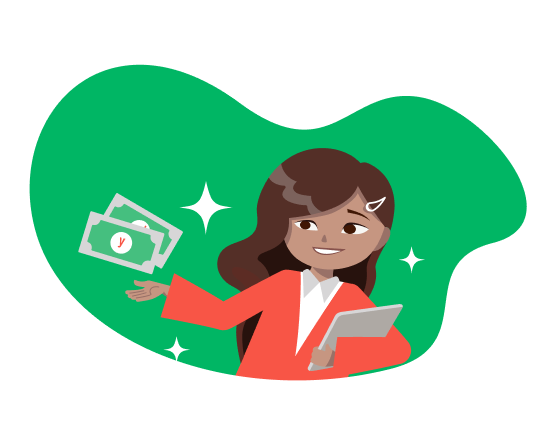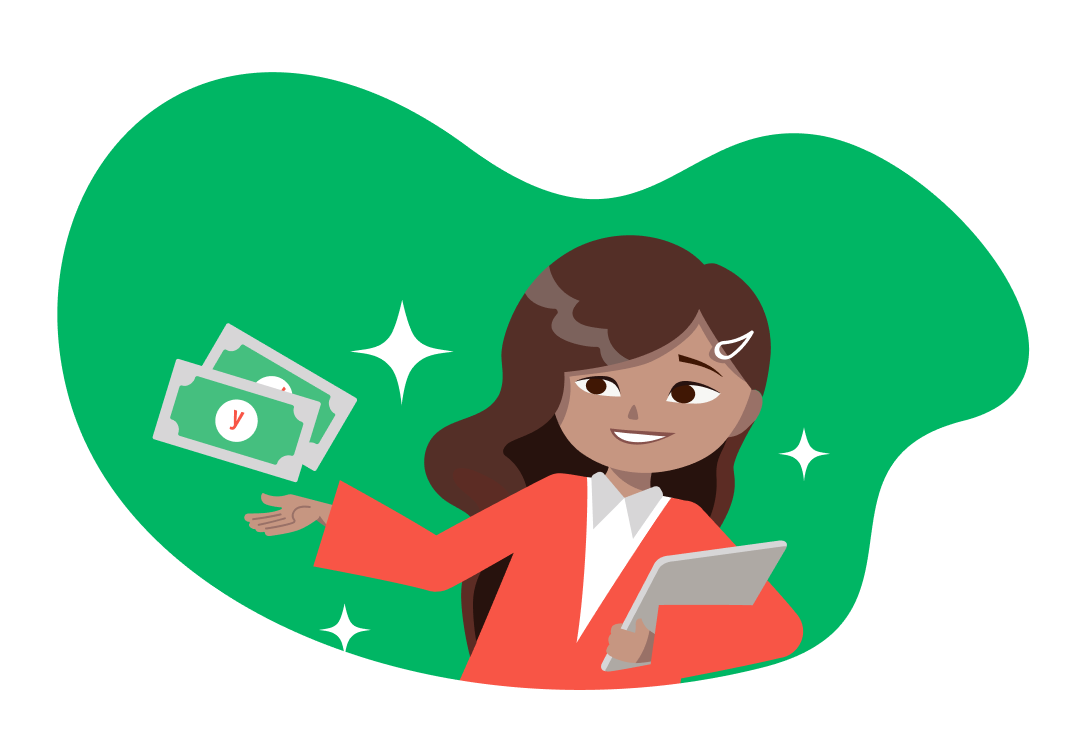
Tips for Teaching Your Child About Using a Credit Card
Everyone nowadays realizes the importance of financial literacy. Parents often successfully manage to explain to their children:
- why it is beneficial to have savings,
- where they can earn some spare cash, and
- how to use their own money wisely.
However, what if money is not fully theirs, but they are allowed to use it as long as they are able to repay it on a fixed date? That is what we call “credit”, and the card that gives you an opportunity to use credit money is, thereby, named “a credit card”. Economic relationships and especially credits are a big part of a modern person’s life. So, before going into the world, a child or a teenager has to learn more about it to avoid failure.
But is this knowledge that significant? A child can live some time without it, can’t he/she? Sure, but it never hurts to learn something that will greatly help you in adulthood. Moreover, today kids are tending to become more and more independent at a young age. Thus, parents should start explaining to kids the basics of financial literacy as soon as a child interacts with money on his/her own for the first time.
Obviously, it would be strange to bring out your credit report and explain it right away. A good thing to start with is a mobile bill, pocket money, and after a while, you can move to debit, and finally, credit cards. Step by step, your child will be ready to take such financial responsibility.
In what ways a credit card would be essential for a kid?
First of all, it enables him/her to open a credit history. Having reached the age of 18 and more, many people face the necessity to take a credit — for educational or personal purposes. However, they stay “invisible” to banks. This can affect a company’s decision to give them a loan simply because it is impossible to predict if the person is a non-payer. This could be solved by getting a credit card while you are a minor. If a bank sees that a person has a positive experience with his/her payments, it will approve a bigger sum for him/her for the next loan.
At the same time, a credit card is more convenient for a teenager than a credit itself. It offers him/her less strict conditions and even gives discounts in some partner organizations.
8 things kids need to know about credits and credit cards

There are some lessons your kids need to learn to understand how to use a credit card rationally. It is only a basis, and you can always go deeper and deeper to develop your child’s financial literacy.
1. First of all, credit money is not their own. A child should realize that every transaction goes from a creditor’s pocket, and it has to be refunded afterward, not taken as a gift. Usually, there is an extra amount of money you have to pay — it is called interest. Certainly, there are some kinds of interest-free credit cards. However, still, it is better to be acquainted with the possibility in advance. The size of this amount depends on the time it takes you to give the money back. It is not some magical golden card with unlimited coins — it is a strict deal.
2. Talking about payment time, it is crucial to bear in mind that delays increase an interest fee and affect your credit history. If you fail to pay bills on time every month, it will give banks serious reasons to deny your request for the next time — it is simply not beneficial to them, so you’d better show a creditor that he/she can rely on you. In some cases, a cardholder can even lose permission to use the card.
3. Moreover, do not hesitate to explain to the child how various credit products work. The better a kid understands the difference between kinds of loans and deals, the more responsible decisions he/she will likely take while using his/her card. And remember — it also influences a credit report and future possibility to take a bigger loan.
Furthermore, do not forget to show a difference between a credit and a debit card so that a child would better realize where different types of money are kept.
4. Not to mention, a credit report should be monitored constantly. Even if all the payments are made on time, it is still beneficial to check the state of your report to prevent fraud and leaks. Analysis of the report will help a child to avoid some fatal mistakes and take necessary actions in extreme cases. Once a year, you can order a free credit report. In other cases, you need to pay an additional fee — tell your kid about it in advance so that he/she will have been ready to prepare extra money by that time.
5. As we said before, a credit card is not limitless. There is a certain amount of money on the card from the beginning — it is a top border you can use. It can change through time, but in any case, a child should not go beyond these numbers (guess what — it also impacts the credit history). It is said that a balance below 30% of the credit limit is perfect. A great idea would be to teach a kid to calculate this balance (you simply need to multiply a credit limit by 0,3) and stick to it. Report monitoring will be of much use, as well.
6. One of the main rules — not to buy anything with your credit card unless you can pay it back. Such a situation can lead to lots of connected problems: late or missed payments — higher fees and interest — spoiled credit history. The best remedy for this disease is budget planning and analysis of the forthcoming income. Also, make a kid take it in: his/her credit card is his/her own responsibility, and it would be wrong and immature to rely on parents in this case. If he/she considers him/herself adult enough to hold and use a card, no one but he/she is in charge of all the problems and mistakes concerning it.
7. This leads us to the next rule — do not let anyone (or anything) influence your buying decision. Many adults suffer from impulsive shopping, not to mention kids who are in the biggest risk zone of the outer influence. Bloggers, TV ads, or friends can say whatever they like. Still, the only person who is responsible for spending your money is only yourself. Besides learning how to tactfully refuse people, the right solution would be to analyze how media and society influence our choices.
8. Help your kid to avoid mistakes as they can be quite hard to overcome. There are just some situations in which past credit history can be a negative factor. Some employers pay attention to credit reports and are likely to hire a specialist with a clean one. The same pattern can work with an apartment rental — a landlord can refuse to make a deal only because of the bad credit history. Sure enough, new credits (for example, a car loan) can also be turned down for the same reasons. Give your kid a hand when he/she needs it, ask about his/her financial success, and slightly tweak his/her card management if necessary.
How to teach your kid to use credit cards step by step
Luckily, there is an algorithm that will help you to increase your kid’s financial literacy in the most efficient way. Obviously, it is not a golden rule, but it is one of the workable options. Check it out and modify it in accordance with your child’s age and character.
1. Firstly, you need to teach your kid to manage a budget. It is a skill, just like swimming or singing, so it needs to be trained. A cool way to start this path is to allow a kid to plan a budget for things like clothes or school supplies — something that you will buy in any case. Later you can give your child more and more financial independence — but he/she only can reach it step by step, not in an eye blink.
2. Next, when a child shows a capability to manage cash, you can open him/her a bank account. This level of financial literacy skill is a bit harder — even some adults are not quite successful here. The point is to teach a kid to track his/her expenditures in an account. To make it more effective, you can create two accounts — one is to spend money from, another one is for savings. Multiple skills in the financial field are better than the only one as they all are tightly connected.
3. As a further extension, get your kid a debit card. It will enable him/her to make payments easier and will form a habit of using a plastic card and track expenditure. After such an experience, usage of the credit card will be much easier.
Before getting a credit card, you’d better explain the crucial differences between these two types to a child. When a child is used to the debit card and realizes how to manage his/her finances, you can add him/her as an authorized user on the existing credit card account. In other words, a child gets his/her own card, but the responsibility of all the payments lies on the parents. It is also a reasonable way to launch kids’ credit history.
4. The next step is to release a child’s own credit card registered in his/her name. In this case, parents can play the role of co-signers. Note that at this stage, it is significant to explain to a child that his/her actions can affect his/her parents’ credit history if they are co-signers. Prevent your kids from borrowing too much and have problems trying to repay it. Especially keep an eye on the teens — they are frequently blinded by the college merch or some kind of fan staff.
To avoid some serious mistakes while using a credit card, discuss purposes and limits in advance. For instance, most families conclude that the best way for a kid to use a credit card is to buy something that has already been listed in the family budget. Thus, a child buys an item by him/herself and later repay this sum with his/her parents’ money. Others prefer to use a credit card for an emergency. In this case, you need to reach an agreement on what to consider an emergency. In other words, try to explain the difference between a broken bicycle and spontaneous going out with friends.

That is why a child should understand the value of money and how it is earned. If a family cannot afford an everyday ticket to the amusement park, a credit card should not be a panacea in a child’s eyes. He/she always has not taken this money for granted — finally, it will be paid from mom’s or dad’s wallet. Or the other way around: a teenager earns some money by him/herself and can use his/her credit card as he/she wishes as long as his/her wages can cover it. Sounds right, but still try to explain that he/she could use it some other way or save for something bigger. But remember: no pressure.
Anyways, keep in mind that sometimes it is extremely difficult for grown-ups to manage their finances. Surely, children find it even harder, so the best way to teach them is to be a helping hand. But note that if you are unsure about your own proficiency in the field of financial literacy, you’d better fill this gap with new knowledge. Check the sources you refer to while explaining something to your child. In case of some misleading information, contact the bank workers to clarify the situation. By the way, solving such problems with the help of qualified specialists is also an essential skill for a kid to learn.
Nonetheless, a frequent mistake of caring parents is over-control — and in the financial field, as well. It is quite clear that giving your child more responsibility and freedom at the same time can be pretty challenging. Why don’t you talk to your kid sincerely and work on the trust issues so that it does not spoil your personal and financial relationships? Lots of parents tend to underestimate their children and consider them more immature than they really are. Be sure your child will be grateful if you manage to understand and trust them. Money is an important part of our life, but there is no need to make trouble out of it.
All in all, if you manage to successfully explain all the aspects of how to use a credit card and what for, it will empower your child to make wise and rational financial decisions in the future when he/she will be totally independent. Provided that he/she understands all the risks and can cope with monthly payments, he/she is more likely to grow up financially literate and not make such mistakes as relying on the credit card and impulsive, careless wasting of funds. Starting to learn this basis from childhood, by the age of 18, a person will be ready to build healthy and wise economic relationships with the modern world.

new engaging articles



